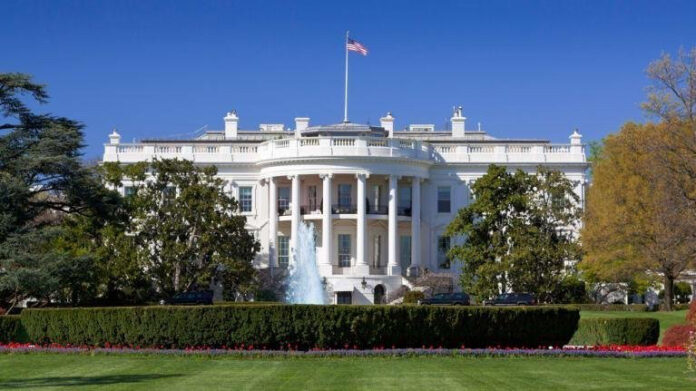By Jim Plunkett
Human resource professionals are likely familiar with orientation or evaluation periods for new employees – a brief period in which the employee’s performance is reviewed to determine whether they are the right fit for the job. As a new employee, the president of the United States is also subject to such scrutiny. Though perhaps a bit arbitrary, a new president’s first 100 days have become a litmus test, of sorts, to review, evaluate, and asses the new president’s abilities and accomplishments. It also provides an opportunity to examine the administration’s policy priorities and what they might portend for future developments. Let’s examine what President Biden’s initial days in office mean from an HR perspective and what we can expect in the coming months.
An Unprecedented Presidential Power Flex
Because it can be so challenging to pass federal legislation, many administrations – regardless of the political affiliation – use two major policymaking tools as a means to avoid Congress and advance their agendas. First, both the inherent authority of the presidency and the federal government’s procurement power make the issuance of executive orders particularly attractive. In the labor and employment space, federal contractors naturally shoulder the burden of the policy prescriptions set forth in these executive orders. However, some executive orders can have an even broader impact. President Trump’s immigration-related executive orders – some of which impacted the ability of non-federal contractor employers to attract and retain talent – are a prime example.
In his first 100 days, President Biden has taken this executive authority to an unprecedented level. During this time, through April 30, 2021, President Biden issued 42 executive orders – four more than President Obama issued during his entire first year as president (President Trump issued 26 executive orders during his first 100 days, and a total of 55 during his first year in the White House). President Biden’s executive orders touch everything from COVID-19, foreign affairs, federal jurisprudence, education, immigration and other matters. Of course, several of these executive orders impact employers and human resource professionals, and include the following:
- Increasing the Minimum Wage for Employees of Federal Contractors. On April 27, 2021, President Biden issued an executive order requiring covered federal contractors and subcontractors to pay employees a minimum of $15 per hour by January 2022.
- Diversity and Inclusion Training. President Biden rescinded a Trump-era executive order that negatively impacted federal contractors’ diversity and inclusion training efforts. Do not be surprised if the administration eventually issues its own executive order on this matter that requires federal contractors to offer prescribed diversity and inclusion training.
- Task Force on Union Organizing. On April 26, 2021, President Biden issued an executive order establishing “within the Executive Office of the President the Task Force on Worker Organizing and Empowerment.” The task force is instructed to recommend “statutory, regulatory, or other changes that may be necessary to make policies, practices, and programs more effective means of supporting worker organizing and collective bargaining.” The executive order does not place any new obligations on federal contractors, but is further evidence that the Biden administration will seek to advance policies favored by labor organizations.
Beyond the issuance of executive orders, President Biden has used the power of the presidency in an unprecedented manner to remove from the federal workforce top political officials with whom he disagrees. Within minutes of being inaugurated, President Biden terminated National Labor Relations Board (NLRB) General Counsel Peter Robb, whose term wasn’t scheduled to expire until November 2021. This is the first time since the NLRB was established in 1935 that its general counsel was terminated. Conversely, general counsel Richard F. Griffin Jr., who President Obama appointed, served the remaining 10 months of his term under President Trump, and Ronald Meisburg, a Republican who President George W. Bush appointed, served for more than one year under President Obama.
President Biden also terminated Sharon Fast Gustafson, general counsel of the Equal Employment Opportunity Commission (EEOC). While some EEOC general counsels in the past have resigned their positions in the wake a change in administrations, the administration’s move to terminate Gustafson further signaled to stakeholders that labor and employment matters are not just a priority for the administration, but that the administration will be extremely aggressive in the methods that it uses to accomplish these goals.
Unleashing the Regulators
The second favored policymaking tool is the federal rulemaking and enforcement apparatus. As with the use of executive authority, the Biden administration has doubled down in this area as a means to make policy. On his first day in office, Biden issued an executive order to provide to federal agencies incredible authority and flexibility in how they make policy. The order rescinds an executive order issued by President Trump that instructed agencies, when possible, to make policy through the Administrative Procedure Act’s (APA) rulemaking process. Such a process provides the regulated community with notice of regulatory actions and thus a potential change in policy, as well as an opportunity to comment on such proposed changes. Doing away with these protections and ensuring that federal agencies are “equipped with the flexibility to use robust regulatory action to address national priorities” means that employers are likely to see more policy prescriptions issued in the form of guidance documents, FAQs, enforcement memoranda issued to agency investigators, and the like. Agencies like the Department of Labor are also more likely to use such subregulatory documents as a basis for enforcement actions against employers.
Beyond the process by which regulations are developed, employers can expect significant changes in terms of the depth and breadth of the subject matter of new rulemakings. The administration would like to increase the power of the Office of Information and Regulatory Affairs (OIRA), which is the federal government’s regulatory “gatekeeping” agency. As an office of the White House, OIRA is inherently political, but it has traditionally deployed an objective economic cost/benefit analysis when reviewing and evaluating rules in the federal regulatory pipeline. The Biden administration would like OIRA to move away from such an analysis and instead use a more holistic or subjective approach to greenlighting federal regulations in order to “promote public health and safety, economic growth, social welfare, racial justice, environmental stewardship, human dignity, equity, and the interests of future generations.”
Unwinding Trump-era Accomplishments at the Department of Labor
Senate-confirmed Republican officials still outnumber Democrats on both the EEOC and the NLRB due to the staggered terms of their appointments. This means that the administration will have to wait until these terms expire and their nominees are confirmed before a significant policy agenda can be put in place. However, the situation is decidedly different at the Department of Labor, which is a cabinet level agency. With Democratic political operatives at the helm since January 20, 2021 and a Secretary of Labor in place since March 23, 2021, there have been significant changes at the DOL that impact employers.
- OSHA and Workplace Safety. During the course of the COVID-19 pandemic, many worker advocates criticized the Occupational Safety and Health Administration for its decision to address workplace COVID concerns through the use of nonbinding guidance documents, as opposed to a rigid standard. The Biden administration is changing gears, and OSHA is expected to issue a COVID-19 related emergency temporary standard (or standards) by the early summer of 2021.
- Wage and Hour Policy. At least during these first 100 days, the top priority of DOL’s Wage and Hour Division (WHD) has been to rescind regulations and policies put in place by the previous administration.
- Independent Contractor Rule. On May 6, 2021, the Department of Labor (“DOL”) issued a regulation rescinding its independent contractor rule, which set forth a test for independent contractor status that focused on the worker’s control over the work opportunity for profit or loss.
- Joint Employer Rule. DOL has proposed rescinding the Fair Labor Standards Act joint-employer rule that established a clear four-factor test for determining joint-employer status.
- Tip Rule. WHD is delaying until December 31, 2021, the effective date of the provisions of a final 2020 rule concerning civil money penalties and employees who perform tipped and non-tipped work.
- Liquidated Damages. Effective April 9, 2021, WHD reinstated a policy that will result in enforcement officials demanding liquidated damages from employers as part of negotiations to settle wage and hour claims.
- PAID Program. The DOL terminated the Payroll Audit Independent Determination (PAID) program, a Trump-era program that encouraged employers to voluntarily correct certain underpayments to employees.
- Union Transparency. The DOL subagency that “promotes labor-management transparency as well as labor union democracy and financial integrity” has proposed rescinding a Trump error rule that required increased financial disclosures from labor organizations.
After doing away with these policies, expect the administration to begin to implement its own, pro-active policy agenda.
* * *
The Biden administration has wasted no time in making policy changes that impact workplaces, and therefore, HR professionals. Moreover, this flood of policy changes is unlikely to dry up any time soon because these early efforts are likely just the first indications of an incoming regulatory tidal wave. It is, therefore, vitally important for employers and HR professionals to monitor the horizon to ensure they can keep their heads above water when these changes arrive.

Jim Plunkett is chair of Ogletree Governmental Affairs and a shareholder in the Washington, D.C. office of Ogletree Deakins. He can be reached at jim.plunkett@ogletree.com.
